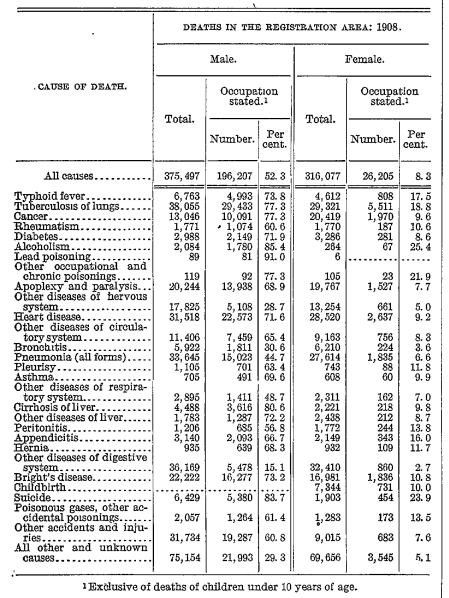With the Cubs winning the World Series for the first time in more than a century, there's a level of excitement for the team's historic achievement that's extending well beyond Wrigley Field and the city of Chicago.
Baseball fans nationwide are appreciating what the franchise accomplished this season, with broad interest for this instant-classic showdown with the Cleveland Indians averaging more than 20 million viewers each game. As for the series finale, Game 7 drew an astounding 40.45 million viewers, making it the most-watched baseball game -- of any kind -- since Game 7 of the 1991 World Series.
Yes, Americans wanted great, thrilling baseball -- along with seeing a perennial loser finally win it all -- and they got exactly that. And while the Indians also brought a great story (and a 68-year title drought) with them it's pretty clear that millions outside the Windy City were rooting for the Cubs to finally separate themselves from the annual gloom, doom and despair that's plagued the franchise since its previous championship way back in 1908.
Thinking about America in 1908, and its stark differences as compared to today, could be one big reason why the Cubs' story has resonated with the public. Obviously, those differences also apply to the fields of science and health -- and it doesn't take a genius to point that out. So we got to thinking about some huge developments related to public health that have taken place since the Cubs last hoisted baseball's World Series trophy, or its equivalent, 108 years ago.
LIFE EXPECTANCY
When Chicago secured its previous title on October 14, 1908, eliminating the Tigers with a 2-0 shutout in Game 5, the average male watching in Detroit's Bennett Park, statistically speaking, could not expect to see his 50th birthday. That year, life expectancy for men was just 49.5 years, and for women it was slightly higher at 52.8. And at the dawn of the 20th century, that was considered a good year.
 "The year 1908 was a year of remarkably low mortality throughout the United States," according to a comprehensive report called the "Bulletin" from the U.S. Department of Commerce and Labor titled Mortality Statistics: 1908, "so far as can be determined from the available registration records, and was marked by a general absence of severe epidemics and of unusual mortality from other causes.”
"The year 1908 was a year of remarkably low mortality throughout the United States," according to a comprehensive report called the "Bulletin" from the U.S. Department of Commerce and Labor titled Mortality Statistics: 1908, "so far as can be determined from the available registration records, and was marked by a general absence of severe epidemics and of unusual mortality from other causes.”
Compare those expected lifespans to data presented by the Centers for Disease Control and Prevention, which reported in 2014 that an American's average life expectancy was 78.8 years; specifically, 76.4 for men, and 81.2 for women.
LEADING CAUSES OF DEATH
When William Howard Taft won the White House in November 1908 he was 51 years old, so from the standpoint of lifespan he was already playing with house money. The 27th president, who weighed 340 pounds and has the distinction of being America's heaviest, remarkably lived until 72 despite his girth, before succumbing to cardiovascular disease. Taft was also the first U.S. president to throw out a ceremonial first pitch at a major league game, in 1910.
 When Taft was elected to lead a nation of nearly 87 million people, heart disease was the third leading cause of death, killing roughly 60,000 Americans. But it was tuberculosis that was the nation's No. 1 killer (78,289 deaths, 67,376 "of the lung"), followed by pneumonia (61,259). Diarrhea and enteritis claimed more than 52,000 lives with the "great majority of the deaths from this disease, or aggregation of diseases, are of infants under 2 years of age, more especially those nourished otherwise than at the breast."
When Taft was elected to lead a nation of nearly 87 million people, heart disease was the third leading cause of death, killing roughly 60,000 Americans. But it was tuberculosis that was the nation's No. 1 killer (78,289 deaths, 67,376 "of the lung"), followed by pneumonia (61,259). Diarrhea and enteritis claimed more than 52,000 lives with the "great majority of the deaths from this disease, or aggregation of diseases, are of infants under 2 years of age, more especially those nourished otherwise than at the breast."
Today, in a country of 322 million, heart disease is the nation's leading cause of death. In 2014, according to the CDC, it claimed 614,348 lives. The other major deadly disease is cancer (591,699). As for Nos. 3 and 4, there is a significant gap from the top two, with death by lower respiratory diseases accounting for 147,101 fatalities that year, followed by 136,053 deaths as result of accidents.
CHILD FATALITIES & INFANT MORTALITY
Just over a century ago, those who faced the greatest chance of dying among all age groups were the youngest children. And the numbers were simply staggering.
In 1908, of the 691,574 deaths recorded by Commerce and Labor, 136,432 or nearly one fifth (19.7%) were infants under the age 1. And when all fatalities of children aged 5 and younger were recorded, totaling 189,865, the percentage soared to 27.5%. Infectious diseases such as TB, scarlet fever and diphtheria were running rampant, especially in crowded cities.
As for the ratio of infant deaths to live births, this statistic has been compiled in modern times. But back in 1908 an official figure didn't exist, and today it's left to guesswork.
"This most important ratio should be readily available for the comparative study of deaths of infants in all of our states and cities," according to the Mortality Statistics bulletin, "but in the great majority of them, unfortunately, the registration of births is worthless, and ratios calculated upon the returns would be deceptive and unreliable."
In today's America, pediatric care of course is greatly improved. Based on 2013 statistics, there were 5.96 infant deaths per 1,000 live births, equating to roughly six-tenths of one percent (.00596). Best guess from a century ago, anecdotal information indicates the deaths-to-live-births ratio to be 1:15 or 1:16, or roughly thirty times higher.
CIGARETTES & TOBACCO SMOKING
While the number of Americans who smoke has declined for decades, 16.8% of the population still continues to light up. Today, smoking is responsible for nearly one in five deaths in America, with more than 480,000 dying each year according to the CDC.
A century ago, while smoking was becoming more widespread and acceptable, the center states, "With the exceptions of 1920, the first few years of the Great Depression, and the end of World War II, per capita consumption of cigarettes in the United States increased steadily from 1901 through 1952." In 1908, a total of roughly 93,500 died from heart disease and cancer, or roughly 13% of all deaths that year. But not all of those fatalities can be attributed to smoking of tobacco, so the smoking death percentage was lower.
 Interestingly, as tobacco was being more widely marketed, Honus Wagner, one of the biggest baseball stars of that era took a public (but not private) stand against it.
Interestingly, as tobacco was being more widely marketed, Honus Wagner, one of the biggest baseball stars of that era took a public (but not private) stand against it.
Back in those days, cards with players' images were commonly included in packs of tobacco, not gum, as in later years. But in 1909 the Hall-of-Fame shortstop demanded that picture not be used because, "Wagner was not happy with the card's producer, the American Tobacco Company, and the smoking message it sent to children," according to ESPN. "Wagner, however, smoked and endorsed cigars, leading some to believe he was merely upset with not being paid for his image."
By restricting the production of his cards, fewer than 200 were ever produced, which made one of Wagner's cards the most valuable of all time. Last month, the T206 as it is known, was sold during on online auction for $3.12 million.

